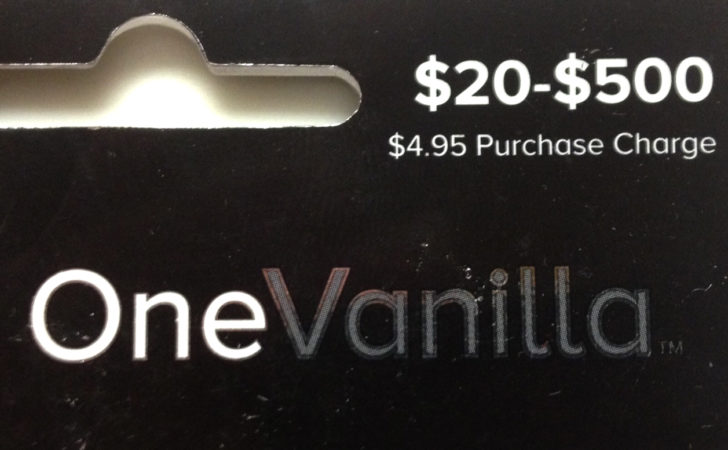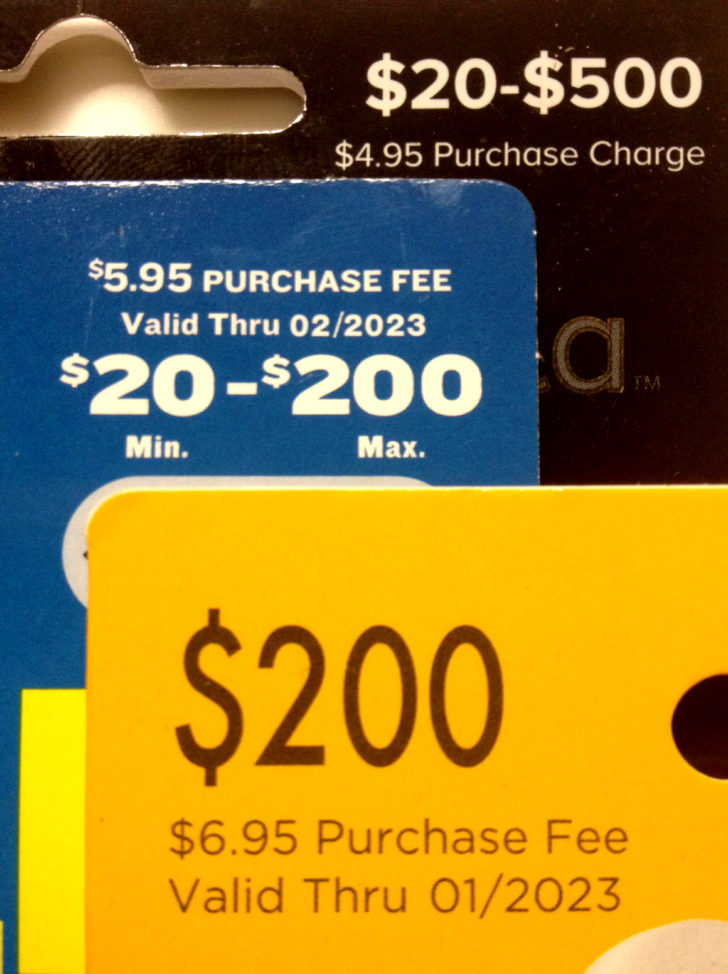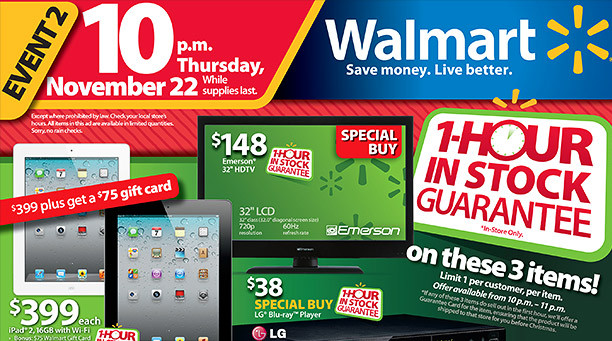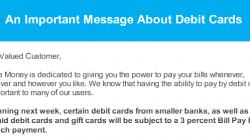From the desk of the Devil’s Advocate…
There’s been extensive discussion in the points and miles community over exactly why CVS ended credit card sales of Vanilla Reloads and most of their other prepaid and reloadable products back in April. Much of the Conventional Wisdom has held that CVS must have been losing tons of money from credit card fees and finally decided to stop the bleeding once and for all.
I don’t buy it.
Why would CVS allow third party gift cards sales with a credit card in the first place if it meant always losing money? Why did they actually increase the daily limit late in the game? And why do they continue to this day to sell many third-party gift cards with a credit card, even Vanilla Visa cards?
Has CVS become a non-profit organization… or is there a simple answer to making money from selling gift cards (yes, even with a credit card)?
Who’s Keeping that $4.95 Anyway?
A lot of the information surrounding the deals CVS and other stores make with Incomm and the purveyors of third-party gift cards is shrouded in corporate secrecy, which means in exploring this topic we’ll have to do a little educated guessing. This is also known in the points and miles community as “wild unsubstantiated speculation” but I will note that we are not under oath here.
So let’s start with that purchase fee we pay for prepaid Visa, Mastercard, and American Express gift cards. Depending on the merchant and the flavor of gift card, that fee can generally range anywhere from $2.95 to $6.95.
Who’s that fee going to? The store? The vendor? The fee fairy?
For the sake of this analysis, let’s be favorable to CVS and assume it’s going to the store. That would mean when we purchase a OneVanilla Visa at CVS with a $4.95 fee and load it with the $500 maximum, CVS is getting roughly 1% of the total sale of $504.95.
Retail stores operate on relatively low margins, but a 1% margin on a product would be ridiculous. It seems incredibly unlikely that any store would be willing to carry a large amount of product at such a horribly low margin. Over the last 5 years CVS has reported an annual gross margin around 20% and an operating margin of roughly 5% to 6%, figures that seem in line with normal retail margins.
So it’s absurd to assume that stores that sell prepaid gift cards are only profiting from the purchase fee and nothing else, and that’s before we even consider the costs of credit card purchases. Depending on the credit card used, merchant fees and related expenses will tack on somewhere between 1.5% and 3% to the store’s cost of the transaction.
Which means if the purchase fee was all CVS was making from prepaid gift card sales, allowing people to use a credit card to buy these things under any circumstances would have been an automatic loss for the chain.
Do Grocery and Drug Stores Adore Subway?
But let’s step back and take a moment to glance at the other possibilities on those ubiquitous gift card racks. We see tons of merchant gift cards for a huge variety of restaurants (Burger King), retailers (Bed Bath & Beyond), online services (iTunes), and the like.
Of course, none of these cards have any purchase fee at all. When you buy a $50 gift card to Starbucks, it costs you exactly $50 and not a penny more. Otherwise no one would buy them, right?

How is CVS and every other store making money off all those gift cards? Even if they restricted all gift card purchases to cash only (and most places still allow credit cards to be used to buy merchant gift cards), they would be guaranteeing themselves a profit of $0.00 on each and every sale. Add in credit card sales and we’re looking at a whole gift card rack of surefire losses.
None of this math is difficult and I’m quite certain the fine folks at CVS have done the same arithmetic. The same holds true for every other grocery and office supply store that carries prepaid Visa/Mastercard/American Express gift cards and still allows them to be purchased with a credit card — a list that is unfortunately dwindling but still far from empty.
So are we to assume that every one of these stores are willing to eat the loss on every sale of these cards just to do their part as an upstanding retail citizen? Is this a giant game of Pay It Forward?
Loss Leaders Never Mean Huge Losses
“Well,” say some Conventional Wisdomers, “perhaps CVS and other stores consider gift card sales a loss leader. They’re just trying to get people into their stores and the loss is the cost of doing business.”
Most people have heard of a loss leader, which is when a retailer deliberately sells a product at a loss in order to entice people to come in and purchase other items at the store that will make up the loss. We’ve all seen loss leaders many times before, often surrounding big shopping days.
As an example, Walmart regularly prints a Black Friday newspaper circular advertising prices on electronics and the like that are so low that they must be insane! Wait, sorry, I got caught up in the marketing. I meant to say they’re so low that they must be losing money on those sales. Which they are, because they’re expecting to make up that loss with other purchases their customers will likely make in the same visit.
But what else do you always see along with the crazy low prices in those Walmart advertising circulars? A small bit of type that reads something along the lines of “Limit 1 Per Customer” or “Rain Checks Unavailable On This Item” or “We Really Only Have Two of These In The Whole Store.”
Because that’s one of the tricks of loss leaders — they advertise the deals to everyone, but only a few people actually get them. It doesn’t matter because once people are already at the Walmart, while a few of them will leave unhappy, most of them will stay and buy other more profitable items.
Now, let’s take that knowledge back to our CVS discussion. The whole point of a loss leader is to use it as an enticement to bring customers into the store, while at the same time limiting the store’s losses to the absolute minimum necessary, right?
So what did CVS do when they were selling Vanilla Reloads by credit card, theoretically at a loss?
They advertised that fact not one iota… and then raised the purchase limit from $1,000 to $5,000 a day.
This is not loss leader behavior. You don’t increase the limits on your loss leader when it is completely unnecessary to do so. The same customers who would come in to buy $5,000 worth of Vanilla Reloads via credit card will still show up if you only allow them to buy $1,000 per trip, and they’ll also buy just as much deodorant and Cracker Jack while they’re there.
CVS reported a profit of $1.25 billion in the second quarter of 2014. This kind of profit generally does not come from putting forward a five-fold increase in your loss leader.
They were making money on those Vanilla Reloads, folks, along with all the other gift cards. It’s the only logical explanation.
Where Does The Profit Come From?
In fact, all stores must be making money from every card on their gift card rack, otherwise they wouldn’t bother to have one. Since they can’t be making money purely from the purchase fee (if there even is one), the gift card vendor must be cutting CVS and similar retailers in on the actual card value.
For example, if CVS sells a $25 Subway card, they undoubtedly get to keep a portion of the proceeds. They collect $25 from the customer and pass along only $20 of that to Subway, thereby achieving a 20% gross margin. (These numbers are only for illustration purposes as we don’t know the actual numbers, but the principle is clear). Subway is willing to take that $5 loss on the gift card sale because they’ll make the money back both through breakage (the gift cards that end up lost or never redeemed) and through added sales from customers who would normally dine elsewhere. Same goes for prepaid Visa cards — Incomm will make the money back via breakage and swipe fees.
The Devil’s Advocate says give CVS credit for knowing their business.
The answer as to why CVS shut down buying Vanilla Reloads with credit cards is pretty obvious. Either the amount of fraud started to outweigh the profits they were making, or Incomm decided to change the margin structure on Vanilla Reloads and other related cards, thereby making it unprofitable for CVS to continue paying credit card fees on those sales. I’d guess it was either option #1 or a combination of the two, but it’s certain things changed only because it stopped being routinely profitable to sell them that way.
Either way, don’t feel bad for CVS, even now when you go in to buy a Vanilla Visa with your credit card. You’re not hurting their profit margins or doing something that will cost the cashier his or her job. If the transaction wasn’t making them money, rest assured that CVS wouldn’t be allowing it.
Now, free Bluebird loads at Walmart? That’s another story…
Devil’s Advocate is a weekly series that deliberately argues a contrarian view on travel and loyalty programs. Sometimes the Devil’s Advocate truly believes in the counterargument. Other times he takes the opposing position just to see if the original argument holds water. But his main objective is to engage in friendly debate with the miles and points community to determine if today’s conventional wisdom is valid. You can suggest future topics by sending an email to dvlsadvcate@gmail.com.







